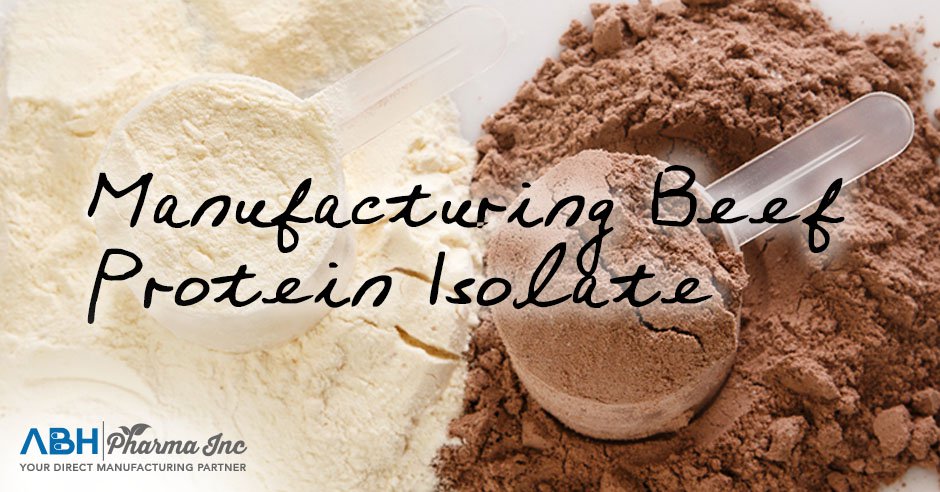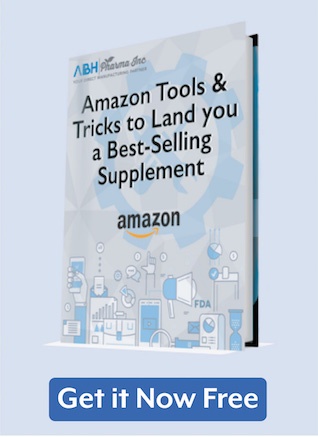Today’s leading supplement providers all have something in common: They have excellent protein products. Protein can be sourced from dairy, meat and plants, and the best protein products have a variety of amino acids which are easily delivered to the body’s muscles—promoting growth. Other protein products pack a slew of natural ingredients, boosting the body’s protein utilization while benefiting athletic recovery.
Which protein sources should you be using? We’re covering the latest advancements for any provider seeking a solid sports nutrition line. If you want to back your product line with a keystone of sports nutrition, consider the following sports nutrition protein powder options and innovations.
Dairy Proteins in Sports Nutrition Protein Powder
Dairy might be an old source of protein, but cow milk is still being transformed in numerous ways to provide casein and whey protein sources. Milk protein concentrate is among these transformations, maintaining an 80-percent casein and 20-percent whey combination. While casein protein is micellar, whey protein is “native” and is also undenatured.

The combination offers a fast-digesting protein combination, giving your supplement line an advantage over slow-digesting alternatives. Casein protein, itself, has recently been marketed as a “pre-sleep” protein. Currently, high-protein, low-fat dairy concentrates are experiencing popularity for their slow-action restoration and overall effectiveness as fitness compounds.
Meat and Animal Proteins in Sports Nutrition Protein Powder
Meat and animal proteins might be primarily consumed in food form, but modern protein providers have reverse-engineered these proteins to offer easily digestible, accessible products. Meat protein alternatives are collagen and gelatin peptides. These peptides have advantages over a slew of exercise-centric proteins, and each can be formed as gels or protein-based beverages and bars. While both collagen and gelatin are missing important EAA tryptophan, they can be easily combined with other types of protein to form a complete protein product.
Plant Proteins in Sports Nutrition Protein Powder
Where plants are considered, supplement providers have a number of options to choose from. Soy, brown rice, yellow pea and hemp protein powders are both effective as pre-workout or post-workout supplements, and each can be blended into a shake powder or a variety of protein bar options.
Soy Protein
Soy protein powder, a byproduct of the soya bean, contains fiber, isoflavones and a number of amino acids. It’s easily digestible, and it can easily be crafted into a smooth, mixable consistency. Because soy protein is both gluten- and lactose-free, it’s a fantastic protein product to market towards lacto-vegetarians and diet-conscious individuals looking for low-calorie, vegetarian options.
Soy protein can also be combined with whey protein, making a complex protein product capable of targeting post-workout goals in a highly effective way.
Brown Rice Protein
Brown rice protein, while not a complete protein by itself, is a great add-on option for supplement providers attempting to “bulk up” their product line with diverse protein sources. You’ll need to rely on brown rice protein which contains enhanced amino acids, for it to sell well. Or, you’ll need to combine brown rice protein with extracts sourced from quinoa, beans or tofu. Understandably, maintaining a protein source alongside actual foods is difficult. Fortunately, supplement providers have already begun formulating multi-protein supplements which contain each of these extracts.
Gluten- and lactose-free—and packed with B vitamins—brown rice protein can boost the consumer’s muscle metabolism while promoting muscle growth. It’s also hypoallergenic, making it an excellent protein source marketed towards those with allergy or digestive problems.
Yellow Pea Protein
Yellow pea protein is similar to brown rice protein. It doesn’t contain all essential amino acids, but it’s an excellent additive to other protein “bases.” Yellow pea protein has become a soy-alternative because it’s lactose free, and several studies support yellow pea protein as a preventative substance for kidney disease and hypertension.
Also similar to brown rice protein is yellow pea protein’s excellent compatibility with multi-vegetable extracts. Pea protein powder is commonly paired with powdered quinoa, beans and tofu extracts. This said, yellow pea protein powder should be marketed with moderation in mind—as overconsumption of yellow pea protein can result in calcium leaking from the bones due to the protein’s affects on the body’s uric acid levels.
Algal Protein
Algal protein holds quite a few benefits, too. Consumers purchase algal protein due to its incredibly weight loss potential. Containing fucoxanthin, a naturally occurring pigment which promotes thermogenesis, algal protein is commonly included in low-calorie blends which promote high-energy, all-natural solutions. Algal protein’s benefits lend themselves to cancer reduction, too. Several experimental studies have recorded algae’s inhibitory effects of oral cancer in animals.
Other studies, meanwhile, highlight algae’s potential for combatting precancerous mouth sores. Both heart-healthy and capable of preventing oxidative stress, algae protein can be included in products directed towards at-risk consumers seeking safe diets. Algal protein can additionally be included in products intended to reduce the likelihood of nonalcoholic fatty liver disease, as algal proteins improve blood lipid profiles.
Hemp Protein
Hemp protein powder is derived from hemp seeds—protein-rich plants which contain complete amino acid profiles. Easily digestible, hemp protein is a great product marketed towards athletes seeking pre-gym protein supplements which won’t cause intra-workout digestive issues.
Hemp protein does have a high calorie count, however, making it a superior protein for individuals attempting to put on weight. Similarly, it’s not necessarily a quality choice for those attempting to lose weight. Today’s supplement providers, for this reason, market hemp protein around omega-3 and omega-6 fatty acid supplements.
Sports Nutrition Protein Powder Delivery Formats
While providers have examined new protein sources for multi-faceted products, supplement gurus and health professionals have experimented with cutting-edge delivery formats. Protein’s delivery is vital, as an individual’s tolerance, digestive fortitude and even lifestyle can impact how “useful” a sports nutrition protein powder is in their day-to-day routines.
For this reason, BCAAs have become important protein powder inclusions. BCAAS increase muscle protein synthesis, helping the body build new muscle fibers. A lot of nutritionist outlets, for this reason, have combined a variety of plant proteins within BCAA products.

Meanwhile, other providers have formulated powders with yeast extracts alongside BCAAs. Yeast consumption positively impacts digestive microflora , further increasing the body’s protein absorption rate. While the physical delivery formats—such as powders, protein bars and protein “bites”—are unlikely to go out of style, many providers are creating complex plant-and-yeast powders which can be translated easily into regularly consumed forms.
Protein matters to consumers, and crafting a comprehensive sports nutrition protein powder line can greatly impact a brand owner’s bottom line. Take a closer look at these protein sources, and market towards your consumers on their terms—combining the nutrition world’s leading BCAA, amino acid and vitamin options around.
Sources:
- https://www.naturalproductsinsider.com/~/media/Files/Nutrition/Library/NPI/Sports%20Nutrition/9-10-Sports-Nutrition.pdf
- https://www.mensfitness.com/training/build-muscle/best-protein-powders-for-vegetarians-and-vegans/slideshow
- https://www.ncbi.nlm.nih.gov/pmc/articles/PMC4254277/
- https://www.livestrong.com/article/371538-brewers-yeast-bodybuilding/
- https://nutritionstripped.com/10-plant-based-proteins-eating/










